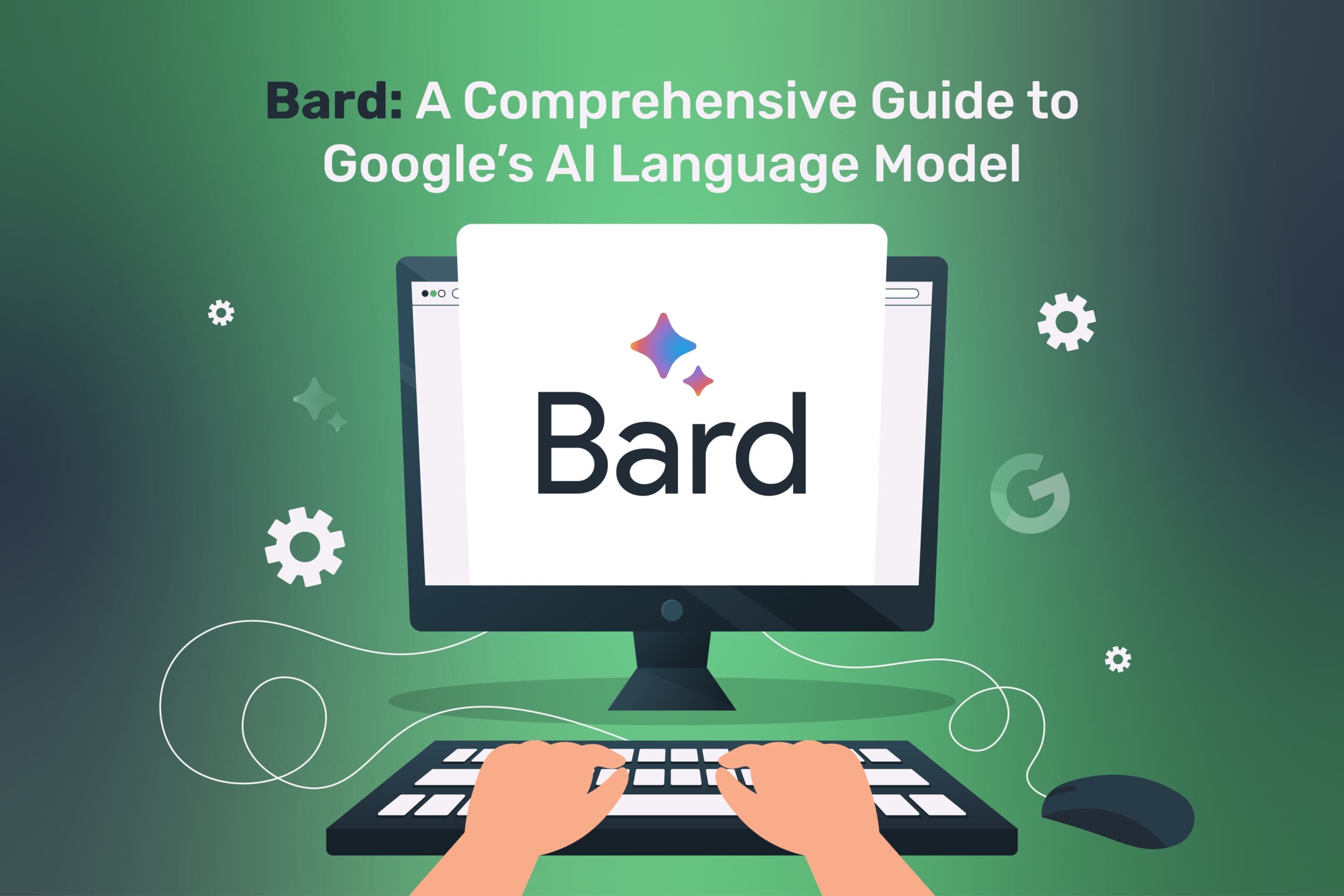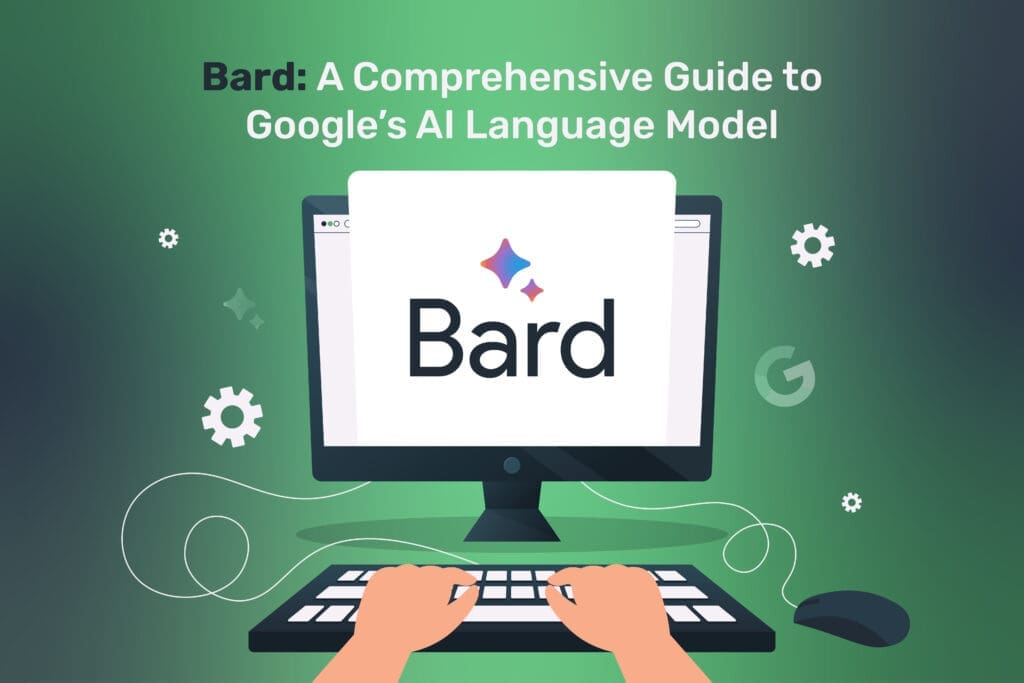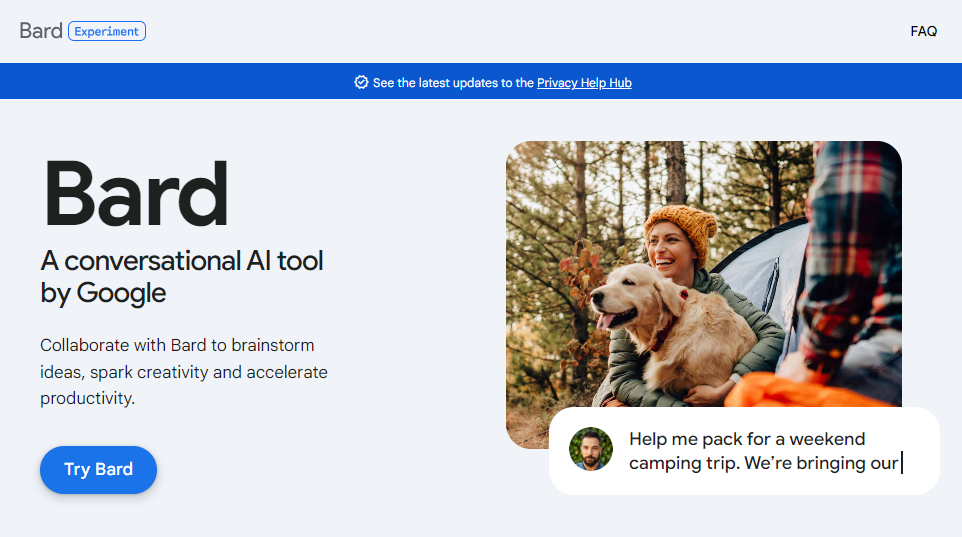From the depths of artificial intelligence, Google AI has unleashed Bard, a groundbreaking large language model (LLM) poised to transform the very fabric of human-computer communication.
Meticulously trained on an unparalleled trove of text and code, Bard possesses an extraordinary aptitude for generating human-quality text. It effortlessly navigates languages and crafts creative content in diverse formats. Its seamless integration with Google Search further amplifies its versatility and responsiveness, granting it access to a wealth of real-world information.
Bard stands as a pivotal milestone in the evolution of artificial intelligence, heralding the dawn of a new era of language and interaction between humans and machines. As we navigate the complexities of this technology, we must ensure its responsible development and utilisation, maximising its benefits while mitigating potential risks.
What is Bard?
Bard is an artificially intelligent language model (LLM) developed by Google AI. It is trained on a massive dataset of text and code, which allows it to generate human-quality text, translate languages, write different kinds of creative content, and answer questions in an informative way. It can also access and process information from the real world through Google Search, making it a powerful tool for research and education.
Bard is trained on a massive dataset of text and code, which allows it to access and process information from the real world through Google Search. This gives it a vast knowledge base and the ability to keep its responses consistent with search results.

This revolutionary LLM holds the key to unlocking transformative potential across a multitude of domains, spanning from education and research to customer service and beyond. Its potential impact on various fields is immense.
In the realm of education, Bard can tailor learning experiences, provide personalised feedback, and even generate creative writing assignments, empowering students to reach their highest intellectual potential. In research, it can assist with literature reviews, data analysis, and scientific paper writing.
In the pursuit of knowledge, Bard can expedite literature reviews, facilitate data analysis, and aid in the crafting of scientific papers, accelerating the advancement of human understanding. In customer service, Bard can expeditiously address customer inquiries, provide insightful product recommendations, and resolve issues with efficiency, fostering unparalleled customer satisfaction.

However, with such immense power comes inherent responsibility. As we embrace the transformative potential of Bard, we must simultaneously acknowledge the potential challenges and ethical considerations that accompany it. Bias, privacy, and the ethical development and deployment of LLMs are paramount concerns that demand careful scrutiny.
Bard’s Features and Abilities
Bard possesses a remarkable array of capabilities that set it apart from conventional language models. Its ability to generate human-quality text, translate languages, write different kinds of creative content, and answer questions in an informative way has sparked widespread interest and anticipation for its potential impact on various fields.
- Natural Language Generation (NLG): Bard can generate different creative text formats, like poems, code, scripts, musical pieces, emails, and letters, using its knowledge of the language and the world.
- Translation: Bard can translate between over 26 languages, making it a powerful tool for communication and language learning.
- Question Answering (QA): It can answer your questions in an informative way, even if they are open-ended, challenging, or strange. It can access and process information from the real world through Google Search to provide comprehensive and informative answers.
- Summarisation: It can summarise any text, identifying its key points and providing a concise overview.
- Paraphrasing: It can paraphrase the text, converting it into different words or phrases while preserving the original meaning.
- Code Generation: It can generate code in a variety of programming languages, including Python, Java, and C++.
- Knowledge Base Creation: It can create and maintain knowledge bases, organising and structuring information from different sources.
- Machine Learning: It can learn from data and improve its performance over time.
Bard’s Applications

Bard has the potential to revolutionise various fields, including education, research, and customer service. Here’s a comprehensive overview of the key applications of Bard:
Education
- Personalised Learning Experiences: Bard can adapt to each student’s individual needs and learning style, providing personalised learning experiences.
- Feedback and Grading: It can provide feedback on written assignments and help students improve their writing skills.
- Creative Writing Assignments: It can generate creative writing prompts and help students complete their creative writing assignments.
Research
- Literature Reviews: Bard can assist with literature reviews by summarising articles, identifying key concepts, and highlighting relationships between different studies.
- Data Analysis: Bard can assist with data analysis by cleaning data, identifying patterns, and generating insights.
- Scientific Paper Writing: Bard can help researchers write scientific papers by generating drafts, suggesting citations, and editing content.
Customer Service
- Customer Inquiry Handling: Bard can handle customer inquiries promptly and efficiently, answering questions and resolving issues.
- Product Recommendations: Bard can provide personalised product recommendations based on customer needs and preferences.
- Issue Resolution: Bard can help resolve customer issues by providing step-by-step instructions and identifying potential solutions.
Marketing
Bard’s ability to generate creative marketing content, such as social media posts, marketing copy, and engaging product descriptions, can be leveraged to enhance marketing campaigns. It can assist in developing targeted marketing strategies, crafting effective ad copy, and creating personalised customer interactions across various channels.
Technical Writing
Bard’s ability to generate technical documentation, including user manuals, API documentation, and training materials, can streamline the technical writing process. It can produce clear, concise, and informative documentation tailored to the specific needs of users.
Creativity and Storytelling
Bard’s ability to generate different creative text formats, such as poems, code, scripts, musical pieces, emails, letters, etc., makes it a powerful tool for creative expression and storytelling. It can assist writers, musicians, and artists in generating ideas, developing concepts, and crafting engaging stories.
Other Applications
Beyond these core applications, Bard’s potential extends to various other fields, including:
- Law: Bard can assist with legal research by summarising legal documents, identifying relevant precedents, and analysing legal arguments.
- Finance: It can analyse financial data, generate investment strategies, and provide financial planning advice.
- Healthcare: It can assist healthcare providers in analysing patient data, identifying patterns and trends, and generating treatment plans.
- Government: It can aid government agencies in processing documents, analysing data, and making informed decisions.
- Global Development: It can assist in developing education programmes, providing humanitarian aid, and promoting sustainable development.
Bard’s applications are constantly evolving as the technology continues to develop and expand its capabilities. As it becomes more sophisticated and accessible, its potential impact on our lives and society will only grow. It is likely that Bard will play an increasingly important role in various industries and aspects of our daily lives in the years to come.
Challenges and Considerations Regarding Bard’s Development and Deployment
The development and deployment of LLMs like Bard raise numerous challenges and considerations that must be carefully addressed to ensure their responsible and beneficial use. These challenges encompass ethical, societal, and technical aspects that demand ongoing attention and dialogue.
Ethical Challenges
- Bias: LLMs are trained on massive datasets of text and code, which may reflect existing biases in society. These biases can be perpetuated in the responses generated by LLMs, leading to discrimination and unfair treatment.
- Transparency: The inner workings of LLMs are often complex and opaque, making it difficult to understand how they generate their outputs. This lack of transparency can hinder accountability and make identifying and addressing potential biases or errors challenging.
- Privacy: LLMs can access and process vast amounts of personal data, raising concerns about privacy violations and the misuse of sensitive information.
Societal Challenges
- Automation and Job Loss: The increasing capabilities of LLMs raise the possibility of job displacement in certain sectors, particularly those involving language processing and customer service.
- Information Manipulation: LLMs can be used to generate fake news, spread misinformation, and manipulate public opinion.
- Social Impacts: The widespread use of LLMs may have unintended social impacts, such as altering human communication patterns and influencing cultural norms.
Technical Challenges
- Scalability: Training and maintaining large language models requires significant computational resources and infrastructure.
- Explainability: Unravelling the decision-making processes of LLMs can be challenging, making it difficult to understand how they arrive at their outputs.
- Data Quality: The training data’s quality and accuracy significantly impact LLMs’ performance and reliability.
Addressing the Challenges
To address these challenges and ensure the responsible development and deployment of LLMs, a multi-pronged approach is needed:
- Transparency and Explainability: Open-sourcing LLMs’ architecture and training data can promote transparency and enable researchers to identify and address potential biases.
- Ethical Guidelines: It is essential to develop and implement ethical guidelines for the development and application of LLMs, focusing on fairness, non-discrimination, and privacy protection.
- Human Supervision and Oversight: Human experts should continuously monitor and oversee the use of LLMs, ensuring they are used for beneficial purposes and not to harm individuals or society.
- Education and Awareness: Raise public awareness about the capabilities and limitations of LLMs, empowering individuals to make informed decisions about their use.
- Continuous Research and Development: Foster ongoing research into the development of LLMs that are more transparent, explainable, and aligned with ethical principles.
By addressing these challenges and considerations, we can harness the potential of LLMs while mitigating their risks and ensuring their responsible integration into society. LLMs have the potential to revolutionise various fields, but their development and deployment must be guided by ethical principles, transparency, and human oversight to maximise their benefits and minimise potential harm.
Bard vs Other AI-Language Models
Now, let’s compare Bard with other AI-language models, like GPT-3, BERT, and XLNet:
Bard (Google)
- Architecture: Bard employs a transformer-based architecture, similar to models like GPT-3, utilising attention mechanisms for contextual understanding.
- Capabilities: It excels in natural language understanding, generation, and contextual awareness, offering impressive language processing capabilities.
- Training Data: It utilises vast amounts of data for training, incorporating a wide range of linguistic contexts and topics.
- Applications: It has potential applications in diverse fields like language translation, content generation, and conversational interfaces.
- Size: Bard is known for its substantial size, containing a vast number of parameters similar to other large language models.
GPT-3 (OpenAI)
- Architecture: GPT-3 is also based on a transformer architecture, facilitating context understanding and generation.
- Capabilities: It offers impressive language understanding and generation capable of completing diverse tasks.
- Training Data: GPT-3 has been trained on an extensive dataset, allowing it to handle various queries effectively.
- Applications: It is used for text completion, question-answering, summarisation, and other language tasks across industries.
- Size: GPT-3 is one of the largest language models, containing 175 billion parameters.
BERT (Google)
- Architecture: BERT utilises a bidirectional transformer architecture, focusing on pre-training language representations.
- Capabilities: It excels in understanding the context of words in search queries, documents, and conversational understanding.
- Training Data: It is trained on large-scale datasets from books, articles, and online sources to capture linguistic nuances.
- Applications: It is primarily used for natural language understanding tasks like sentiment analysis, named entity recognition, etc.
- Size: Although smaller than Bard or GPT-3, BERT contains a considerable number of parameters.
XLNet (Google/CMU)
- Architecture: XLNet integrates elements from transformers and autoregressive models, enabling bidirectional and context-aware learning.
- Capabilities: It focuses on capturing bidirectional context while avoiding pre-training data leakage.
- Training Data: It is trained on diverse datasets to understand context and relationships effectively.
- Applications: XLNet is used for tasks requiring context awareness and understanding complex relationships.
- Size: It is smaller in parameter size compared to GPT-3 and Bard but still significant.
Each of these AI language models has its unique strengths and focus areas, catering to different applications and tasks within the field of natural language processing. While Bard and GPT-3 share similarities in architecture and capabilities, each model has distinct characteristics and potential applications in various domains.
Conclusion
Bard, a large language model (LLM) developed by Google AI, stands as a groundbreaking advancement in artificial intelligence with the potential to transform the way we use language and interact with computers. Its ability to generate human-quality text, translate languages, write different creative text formats, and answer questions in an informative way holds immense promise for various fields, from education and research to customer service and beyond.
As we continue to explore Bard’s capabilities, we must also prioritise the development of ethical guidelines to ensure its responsible and beneficial use. With careful stewardship, Bard and other AI advancements can pave the way for a future where language serves as a bridge between humans and machines, fostering innovation, enriching our lives, and shaping a more interconnected and harmonious world.


